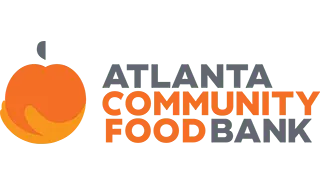The Georgia Department of Human Services announced Friday, Oct. 24, that SNAP benefits are expected to end Nov. 1 due to the federal government shutdown, which could put millions of Georgians at risk of going hungry.
SNAP — the Supplemental Nutrition Assistance Program — provides food benefits for 1.4 million Georgians, including more than 640,000 children. As of 2024, nearly 18,000 Hall County residents received SNAP benefits, accounting for about 8% of the population.
The program is funded entirely by the federal government and administered by the U.S. Department of Agriculture.


‘People are going to go hungry’
Rebecca Thurman, executive director of the Georgia Mountain Food Bank, said her board has authorized emergency funding to purchase three truckloads of food to meet the expected increase in demand.
Georgia Mountain Food Bank sends food to 60 food pantries across five counties in Northeast Georgia — Hall, Lumpkin, Dawson, Union and Forsyth. On average, Thurman said, 11% of residents in those counties rely on SNAP.
“So those people will now be turning to the food pantry network to try to get food assistance even more than they already do,” she said.
She said Georgia Mountain Food Bank helps feed about 66,000 people a year, though it remains to be seen how much that number could rise as people’s food stamps run out.
You can still use the benefits you have
The Department of Human Services said SNAP recipients can still use existing funds on their Electronic Benefits Transfer cards, but EBT cards will no longer work starting Nov. 1.
Recipients can check their EBT card balances via the ConnectEBT website or app. The app is available on both Apple and Android devices.
“DHS understands how important SNAP benefits are to Georgia families and is closely monitoring the situation,” the department said.
Can anything be done to fund the program?
The USDA has close to $6 billion of contingency funds, which can cover about two-thirds of SNAP benefits for a month, according to a press release by the Georgia Budget and Policy Institute.
“USDA will need to act quickly to ensure states can provide available benefits on time,” GBPI said.
“If the (USDA) can cover full or even partial SNAP benefits for November, it provides some certainty that families and individuals can go to the grocery store and buy the essentials and maybe something for Thanksgiving,” said Ife Finch Floyd, GBPI’s director of economic justice.
In a Thursday letter, U.S. Sens. Raphael Warnock and Jon Ossoff joined other Democratic senators in urging USDA Secretary Brooke Rollins to release available funds to keep SNAP benefits running through November.
“Let us be clear: this is a choice Trump’s USDA is making,” Warnock told MSNBC’s Chris Hayes on Thursday. “There’s no reason why those benefits could not be available to folks come November. But we are in a moment where we have craven politicians who are literally using people as pawns.”
On the other side of the aisle, U.S. Sen. Josh Hawley, a Republican from Missouri, has introduced legislation to reinstate SNAP benefits during the shutdown.
“Since the Democrats refuse to fund the government, I’m introducing legislation to reinstate food stamps and farm programs immediately,” Hawley said in a statement. “Missourians shouldn’t go hungry because of the Left’s incompetence. Our kids deserve to eat.”
“Tapping the contingency fund wouldn’t leave money for other emergencies that are known to pop up with the program, and if the full $9 billion can’t be covered, it could take weeks to mete out a smaller percentage of money to each state’s program — meaning families would miss their Nov. 1 food benefits anyway,” Politico reported.
Facts about SNAP
By helping people afford groceries, SNAP reduces food insecurity by about 30%, according to GBPI.
SNAP also puts more than $3 billion into Georgia’s economy by supporting food sellers throughout the state.
People living in rural areas are more likely to use SNAP than people in cities. About 17% of people living in small towns and rural areas use SNAP compared to 11% of people living in more populous metropolitan areas.


















